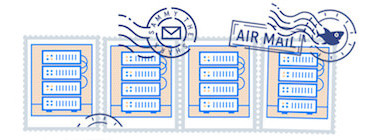Tech Talk
How to Deploy a Resilient Node.js Application on Kubernetes From Scratch

Video
About the Talk
You may have heard the buzz around Kubernetes and noticed that many companies have been rapidly adopting it. Due to its many components and vast ecosystem it can be quite confusing to find where the path starts to learn it.
In this session, you will learn the basics of containers and Kubernetes. Step by step, we will go through the entire process of packaging a Node.js application into a Docker container image and then deploying it on Kubernetes. We will demonstrate scaling to multiple replicas for better performance. The end result will be a resilient and scalable Node.js deployment.
You will leave this session with sufficient knowledge of containerization, Kubernetes basics, and the ability to deploy highly available, performant, and scalable Node.js applications on Kubernetes.
💰 Use this free $200 credit to try out Kubernetes on DigitalOcean for free!
About the Presenter
Kamal Nasser is a Developer Advocate at DigitalOcean. If not automating and playing with modern software and technologies, you’ll likely find him penning early 17th-century calligraphy. You can find Kamal on Twitter at @kamaln7 or on GitHub at @kamaln7.
Resources
View the slides for this talk, or watch the recording on YouTube.
Transcript of The Commands and Manifests Used
Be sure to follow along with the recording for an explanation and replace kamaln7 with your own DockerHub username.
Node App
-
Create an empty node package:
npm init -y -
Install express as a dependency:
npm install express -
index.js
const express = require('express') const os = require('os') const app = express() app.get('/', (req, res) => { res.send(`Hi from ${os.hostname()}!`) }) const port = 3000 app.listen(port, () => console.log(`listening on port ${port}`))
Docker
-
Dockerfile
FROM node:13-alpine WORKDIR /app COPY package.json package-lock.json ./ RUN npm install --production COPY . . EXPOSE 3000 CMD node index.js -
Build the image:
docker build -t kamaln7/node-hello-app . -
Edit
index.jsand replace the wordHiwithHello. -
Re-build the image and notice Docker re-using previous layers:
docker build -t kamaln7/node-hello-app . -
Run a container to test it:
docker run --rm -d -p 3000:3000 kamaln7/node-hello-app -
Look at the running containers:
docker ps -
Stop the container:
docker stop CONTAINER_ID -
Push the image to DockerHub:
docker push kamaln7/node-hello-app
Kubernetes
- Get worker nodes:
kubectl get nodes - Create a deployment:
kubectl create deployment --image kamaln7/node-hello-app node-app - Scale up to 3 replicas:
kubectl scale deployment node-app --replicas 3 - Expose the deployment as a NodePort replica:
kubectl expose deployment node-app --type=NodePort --port 3000 - Look at the newly created service (and the assigned port):
kubectl get services - Grab the public IP of one of the worker nodes:
kubectl get nodes -o wide - Browse to
IP:portto test the service - Edit the service:
kubectl edit service node-app- Replace
port: 3000withport: 80 - Replace
type: NodePortwithtype: LoadBalancer
- Replace
- Verify that the service was updated:
kubectl get service - Run the above command every few seconds until you get the external IP address of the Load Balancer
- Browse to the IP of the Load Balancer
Thanks for learning with the DigitalOcean Community. Check out our offerings for compute, storage, networking, and managed databases.
This textbox defaults to using Markdown to format your answer.
You can type !ref in this text area to quickly search our full set of tutorials, documentation & marketplace offerings and insert the link!
Featured on Community

Get our biweekly newsletter
Sign up for Infrastructure as a Newsletter.

Hollie's Hub for Good
Working on improving health and education, reducing inequality, and spurring economic growth? We'd like to help.

Become a contributor
Get paid to write technical tutorials and select a tech-focused charity to receive a matching donation.

very good tutorial!
How do we apply SSL / lets encrypt in kubernetes? Do you have any tutorial about this?
thanks
This is a really good tutorial. Most tutorials focus too much on the .yml config which is not easy to understand when just getting started. Also, the delivery is high quality and engaging.